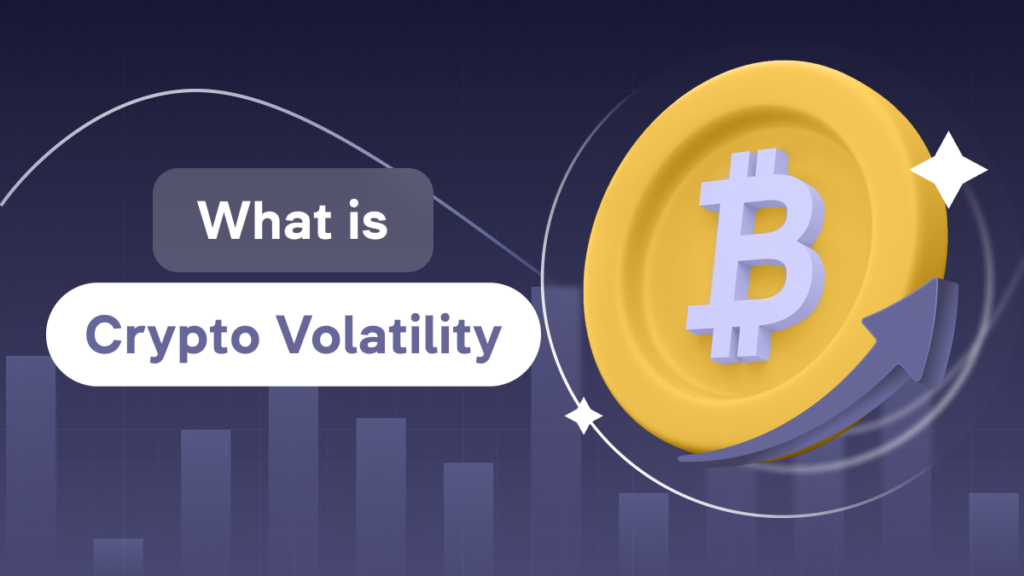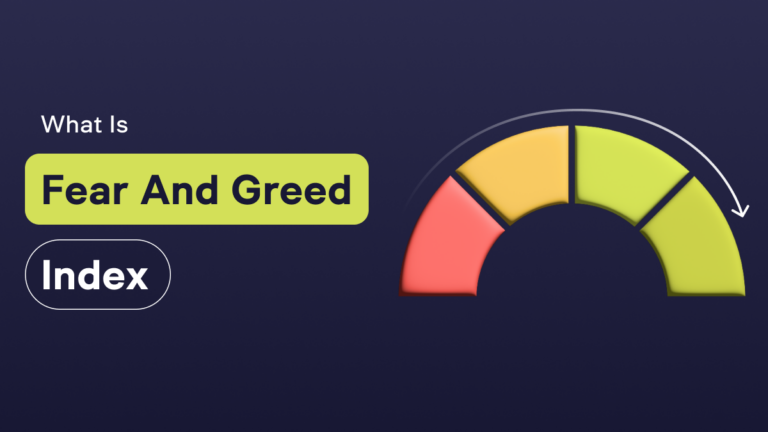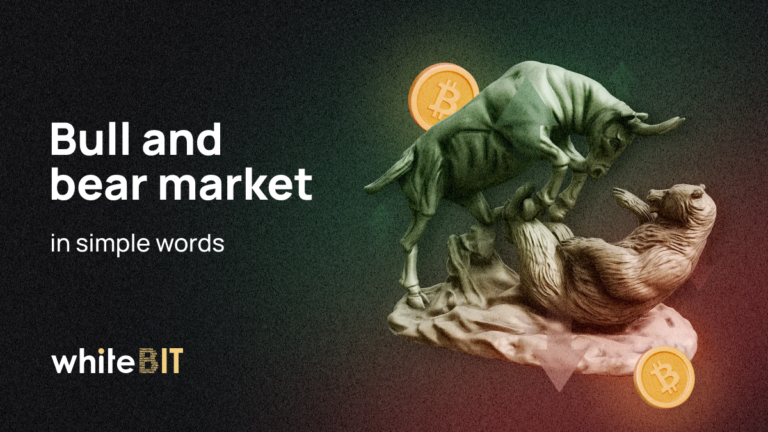What Is Crypto Volatility?

Content
The cryptocurrency market is known for its volatility. It’s a realm where fortunes can be made and lost in the blink of an eye. What drives these wild price swings in the world of digital currencies?
In this article, we will delve into the topic of cryptocurrency volatility, addressing questions like how volatile is cryptocurrency, what influences cryptocurrency volatility, and what trading strategies can be effective in a volatile market.
What Is Volatility in Cryptocurrency?
It’s no surprise that cryptocurrency is volatile. On one hand, it’s the potential for prices to skyrocket that lures in many investors. But volatility is not just about sharp price surges; it’s also about deep plunges.
Cryptocurrency volatility refers to the degree of price fluctuations in digital assets, typically expressed in percentages. High volatility indicates a significant price fluctuation range that can change rapidly in both directions. In other words, cryptocurrency prices can quickly jump up or drop with noticeable intensity.
For example, cryptocurrency X may exhibit volatility if its price changes by 10% or more within a single day. This means that when the price of X is $100, it could suddenly surge to $110 or drop to $90 within one day. Such sharp price changes indicate the high volatility of this cryptocurrency.
These drops can be so sudden and steep that investors unaware of the risks could face substantial losses. Moreover, some investors see volatility as an opportunity to reap significant profits in a short period.
It’s crucial to remember that cryptocurrency market volatility can lead not only to gains but also to substantial losses. Thus, investors must be prepared for various scenarios and have a clear action plan to mitigate risks.
What Makes Crypto So Volatile?
Since the market operates based on the principles of supply and demand, sharp price changes occur when there’s a significant imbalance on either side. In other words, prices surge when buyers suddenly outnumber sellers and decline when some catalyst prompts a large number of people to sell their assets. Let’s delve into how various elements, such as market sentiment, speculation and trading activity, technological factors, and regulatory developments contribute to the fluctuation in crypto prices.
Market Sentiment:
One of the key drivers of cryptocurrency price volatility is market sentiment. When investors and traders exhibit a positive outlook on the market, it often increases demand for cryptocurrencies, pushing their prices upwards. Conversely, pessimistic sentiment can trigger a wave of selling, causing prices to plummet. Factors like news events, social media trends, and public perception can significantly sway market sentiment, leading to abrupt price movements.
Speculation and Trading Activity:
The speculative nature of cryptocurrency markets amplifies their volatility. Traders often make decisions based on expectations rather than intrinsic value, leading to sudden price fluctuations. High-frequency trading, margin trading, and the prevalence of trading bots also contribute to rapid changes in price. The dynamic and 24/7 nature of cryptocurrency markets further intensifies the frequency and speed of trading, adding to the volatility.
Technological Factors:
Technological developments in the blockchain and cryptocurrency can stabilize and destabilize prices. Upgrades and advancements in blockchain technology can improve the scalability, security, and utility of cryptocurrencies, making them more attractive to investors. Conversely, security breaches, software vulnerabilities, or network congestion issues can lead to panic selling and price drops.
Regulatory Developments:
When governments or regulatory bodies announce favorable regulations, it can boost confidence and attract institutional investors, driving prices higher. Conversely, news of stricter regulations or outright bans can cause panic and a mass exodus of investors, resulting in sharp price declines.
How to Measure Volatility in Crypto?
Unraveling the mystery of cryptocurrency volatility requires a keen eye for market dynamics and the right analytical tools. Here are some of the essential instruments employed by crypto experts to gauge the turbulence within digital asset markets:
Standard Deviation
Standard Deviation, the bedrock of volatility measurement, quantifies how much cryptocurrency prices deviate from their average. A higher standard deviation signifies the wild swings in the market. With this indicator, traders can assess volatility and identify potential trend reversal points in the market.
Average True Range (ATR)
Average True Range, or ATR, calculates the average range between a cryptocurrency’s daily high and low prices over a predefined time frame. ATR helps you to track the intraday volatility of cryptocurrency, which can be useful for comparing various markets and making trading decisions.
Relative Strength Index (RSI)
The Relative Strength Index (RSI) is not a direct measure of volatility. This indicator reflects the speed and change in the asset’s price, helping to understand the relative strength of these price changes. It helps track the momentum of price movements and make trading decisions based on them.
While the RSI instrument is available in the basic WhiteBIT terminal, the other indicators can be accessed via the TradingView chart on WhiteBIT crypto exchange.
The Impact of Crypto Volatility
Opportunities and Risks for Investors
Volatility in cryptocurrency creates a high-stakes arena, offering enticing profits while bearing the risk of substantial losses. Effective risk management is crucial for trading in volatile markets.
Effect on Adoption
High volatility, characterized by dramatic price swings, once enticed new investors drawn by the fear of missing out (FOMO) on soaring prices or the chance to buy the dip. However, when crypto market volatility tapers off, and markets turn bearish, it can impede cryptocurrency adoption, discourage participation, and hinder the growth of the crypto ecosystem.
Long-term Investment Considerations
To profit from this dynamic landscape successfully, long-term investors diversify their portfolios, employ prudent risk management, and maintain unwavering faith in blockchain technology’s transformative potential. In the ever-evolving crypto realm, volatility becomes a catalyst for growth, a fundamental consideration for those committed to the long-term vision.
Strategies for Dealing with Cryptocurrency Volatility
Trading during the crypto price volatility requires a unique set of strategies to manage risks and seize opportunities. Investors should consider a range of approaches, including:
Risk Management
Dollar-Cost Averaging (DCA): With DCA, investors commit to a disciplined practice of consistently acquiring a fixed quantity of a digital asset at multiple intervals. This approach serves as a protection against price swings, as with this strategy, traders are rather focusing on long-term results than short-term market ups and downs. For those who prefer a prudent and measured approach, DCA is the cornerstone of smart crypto investment.
Smart Money Trading: Reducing the influence of volatility on investments involves tracking the moves of significant institutional players. Investors who monitor the actions of these large market participants use their insights and signals to inform their trading strategy. Such traders can identify future price movements and leverage them to their advantage.
Day Trading: Day trading is an approach that thrives on short-term price fluctuations. Day traders open and close positions within a single trading day, capitalizing on rapid price changes. The volatility of crypto can create fast profit opportunities, as prices can shift significantly in the span of a day.
Staying Informed
Successful investment in volatile markets hinges on the combination of analysis with your chosen trading strategy. Keeping a finger on the pulse of the cryptocurrency landscape is crucial. Being well-informed about market trends, technological developments, and the latest news can help you make informed decisions in a swiftly evolving environment.
Moreover, staying informed about external events and market sentiment drivers is equally vital. News or expectations about events can significantly influence market volatility, creating either bullish or bearish sentiment. Traders must be well-versed in key events in the financial world, concerning both crypto and traditional markets, to anticipate and prepare for the shifts in market dynamics.
Emotion Control
Maintaining emotional equilibrium amidst cryptocurrency price turbulence is paramount. Emotional reactions can lead to impulsive decisions, potentially resulting in losses. Staying level-headed and understanding when to act and when to hold firm is key to managing your investments effectively during market volatility.
With these strategies, investors can handle the challenges of cryptocurrency volatility and harness its power to their advantage. The crypto world is dynamic, and success lies in your ability to adapt, respond, and stay resolute in the face of ever-shifting market conditions.
The Bottom Line
In the ever-evolving world of cryptocurrencies, volatility is a defining characteristic that both challenges and rewards investors. Understanding the factors that drive crypto volatility and adopting smart strategies can help you tame this power successfully. Adapting the trading strategy, restraining from emotional trades, and safeguarding against risks is the key to success.
FAQ
Cryptocurrency volatility is driven by various factors, including market sentiment, speculation, technological factors, and regulatory developments. These elements often trigger rapid and significant price fluctuations.
Market sentiment plays a pivotal role in crypto price volatility. Positive or negative news and developments can sway sentiment, influencing prices as traders react to shifting perceptions.
Yes, there are strategies such as risk management, staying informed, and controlling emotions. These methods help investors capitalize on crypto volatility while mitigating potential risks.
Predicting crypto volatility is absolutely challenging, but traders can enhance their foresight by using technical analysis and staying informed about industry news. Technical analysis helps identify price patterns and trends while staying updated on the news can offer insights into market sentiment and potential catalysts for volatility, aiding in more informed decision-making.
Common mistakes include overtrading, emotional decision-making, and neglecting risk management. Being aware of these pitfalls is vital for successfully navigating crypto volatility.
- Smart Money Concept
- What is Spot Trading in Crypto, And How Does It Work?
- How Does Bitcoin Halving Work and Why Is It Important?
- What Is Launchpad In Crypto? Launching a Crypto Project to the Moon in 3, 2, 1…
- How to Make a Cryptocurrency Wallet?
- Crypto Asset Management for Institutional Investors: Emergence of Institutional Crypto Custody Services
- What Is Crypto Market Making, and Who Are the Market Makers?










